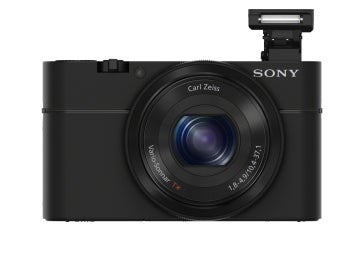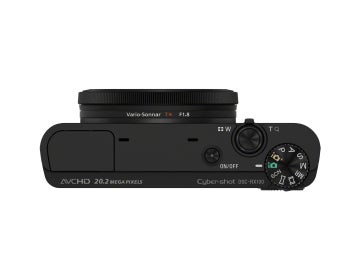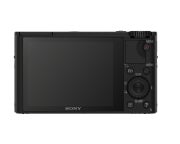Until now, anyone looking for the best pocket camera available would be hard-pressed to find anything better than the Canon PowerShot S100. The Sony Cyber-shot DSC-RX100, announced today, looks set to surpass the S100 and become the new king of the premium compact camera world--possibly by a wide margin.
The RX100 is the most compelling point-and-shoot announcement of the past few years, for quite a few reasons. Start with the sensor: Despite a body that's just a tad bigger than that of Canon's S100, the RX100 has a 20-megapixel CMOS sensor that measures 13.2mm by 8.8mm, about 2.7 times bigger than the sensor in the S100 (7.6mm by 5.7mm) and all of its similarly sized rivals. The RX100's newly developed sensor is still smaller than the ones found in APS-C-format DSLRs and the Canon PowerShot G1 X, but it's a much larger sensor than the ones offered in anything that can fit in your pocket.
In tandem with that much-larger sensor, the RX100's very wide F1.8 aperture should make it a standout camera when you're shooting for dramatically shallow depth of field and in low-light situations. Several F1.8-aperture premium compacts are on the market already--namely, the Nikon Coolpix P310, the Olympus XZ-1, and the Samsung TL500--but all of those cameras have significantly smaller sensors. In addition, the RX100 has a 3.6X optical zoom range (from 28mm to 100mm), which should make it a nice option for wide-angle shots and portraits.
The RX100 also looks to excel in capturing video, as the camera takes 1080p video at a smooth 60 frames per second, and it provides manual shutter and aperture controls when recording movies. On top of that, the RX100 borrows one of the best features of Canon's S100: a programmable control ring around the lens, which provides quick access to manual focus controls, shutter and aperture adjustments, and ISO settings (from ISO 100 to a relatively insane 25,600).
In addition to essentials for manual-minded shooters, such as RAW and RAW+JPEG shooting and peaking assist for manual focus, the RX100 has many of the automated in-camera modes that have made Sony's recent Cyber-shot models so fun to use for casual photographers, including a pan-to-capture Sweep Panorama mode, an exposure-bracketing Handheld Twilight mode for shooting in the dark, an "Auto Portrait Framing" feature that automatically recrops portrait shots to fit the rule of thirds, and a 10-fps burst mode at full 20-megapixel resolution.
The camera has a pop-up flash, a sturdy-feeling aluminum body, and a sharp 3-inch LCD screen with 1.2 million dots of resolution. Sony says the RX100's newly designed battery is rated for 330 shots per charge, an advantage over the PowerShot S100's 200-shot battery. Like the S100, the RX100 sacrifices a bit of expandability to achieve its pocketable size, as it has no hot shoe on top for external flashes or microphones.
Sony is billing the RX100 as "the professional's compact camera," and all of that high-end hardware will come at a premium price. When it becomes available in July, the Cyber-shot DSC-RX100 will sell for $650, making it one of the most expensive fixed-lens cameras we've ever seen. You can get an entry-level DSLR or a compact interchangeable-lens camera with a kit lens for that price. When it comes to pocketable fixed-lens power, however, this camera looks like it will be the cream of the crop.













0 comments:
Post a Comment